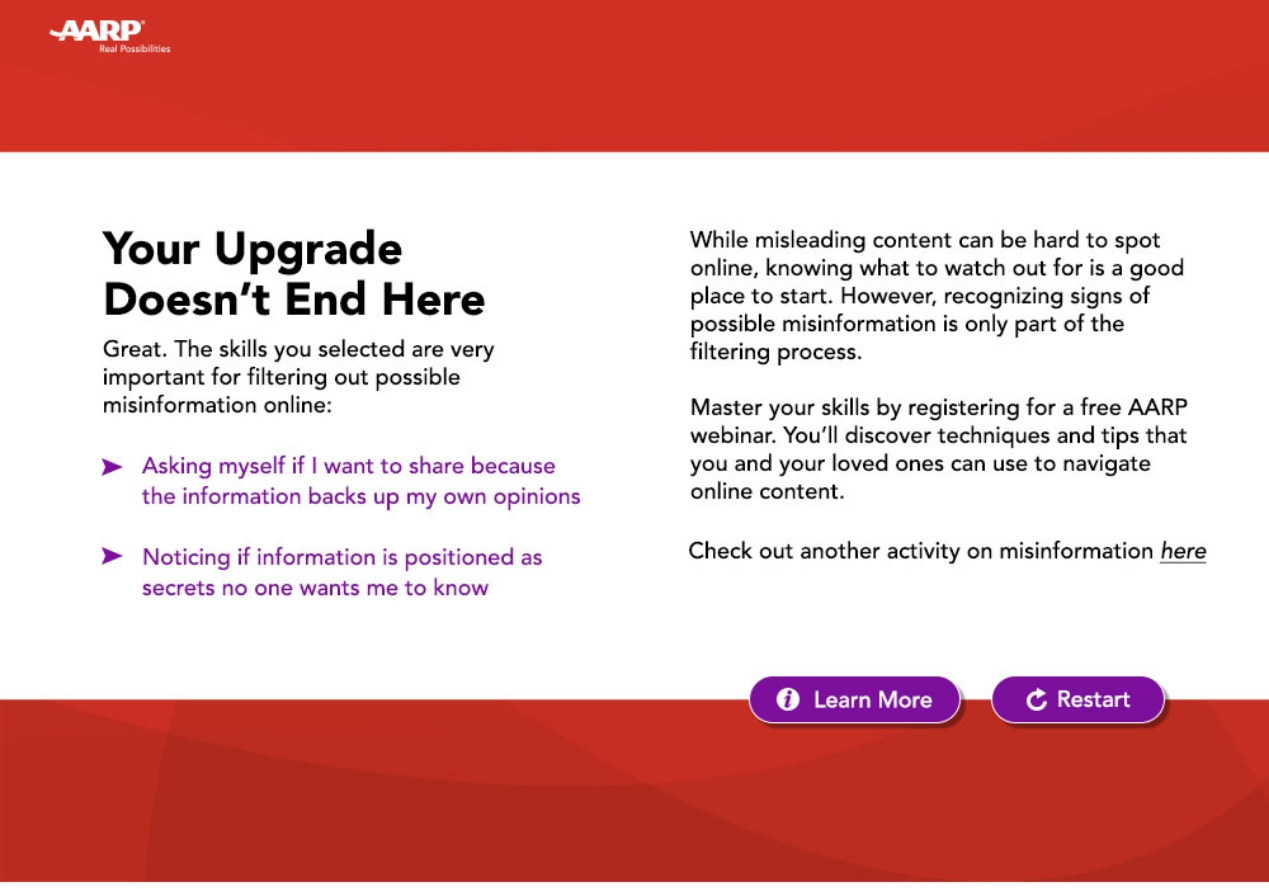
AARP
personI was the sole designer on this project. While I collaborated with team members on feedback, the work shown is my own unless otherwise noted.
Responsibilities:
Tools Used:
Overview
This project, created in collaboration with AARP, aimed to educate users on how misinformation spreads across the internet, particularly on social media, and how to recognize and mitigate its effects. The course, designed to accompany an AARP webinar, utilized a mix of motion graphic videos, interactive e-learning content, and supplemental materials to drive home the key messages about the dangers of misinformation.
Learning Objectives
- Demonstrate how misinformation can quickly spread online, even through seemingly innocent posts.
- Educate learners on recognizing red flags that signal false or misleading information.
- Provide real-world examples of how misinformation has perpetuated myths and shaped public perception.
- Equip learners with the skills to stop the spread of misinformation by verifying sources before sharing content.
With a focus on real-world scenarios, the course used a blend of educational tools to highlight how fast misinformation can spread and the damage it can cause. The instructional design focused on creating relatable, tangible examples that resonate with the target audience. We utilized motion graphics and interactive elements to ensure that the learning experience was not only informative but also engaging.






